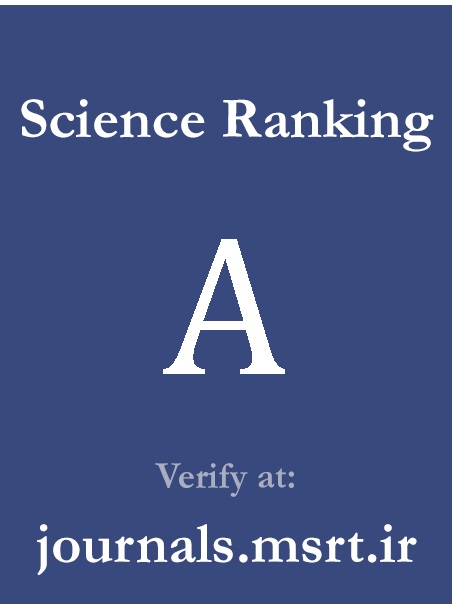The Effectiveness of Rational Emotive Behavior Therapy (REBT) on Feelings of Rejection and Alexithymia in Women with Marital Conflict
Keywords:
feelings of rejection, alexithymia, Rational Emotive Behavior Therapy, marital conflictAbstract
Purpose: The present study aimed to determine the effectiveness of Rational Emotive Behavior Therapy (REBT) on feelings of rejection and alexithymia in women experiencing marital conflict.
Methods and Materials: The research method was a semi-experimental extended design of pre-test–post-test with follow-up and a control group. The statistical population included all women with marital conflict who referred to psychological service clinics in districts 2, 3, 4, and 5 of Tehran in 2021. A total of 30 participants were selected using purposive sampling and randomly assigned to experimental (15 participants) and control groups (15 participants). Data collection instruments included the Kansas Marital Conflict Scale (KMCS; Egman et al., 1990), the Toronto Alexithymia Scale (Bagby, 1994), the Rejection Sensitivity Questionnaire (Downey & Feldman, 1996), and Ellis’s Rational Emotive Behavior Therapy protocol (1962), administered over eight 50-minute sessions. For data analysis, multivariate covariance analysis (MANCOVA) and SPSS version 22 software were used.
Findings: The results of covariance analysis indicated a significant difference between the scores of the control and experimental groups (P < .001). Specifically, Rational Emotive Behavior Therapy led to a reduction in overall scores of feelings of rejection and alexithymia among women with marital conflict.
Conclusion: The findings showed that Rational Emotive Behavior Therapy improves feelings of rejection and alexithymia in women experiencing marital conflict. Therefore, REBT can be applied alongside pharmacological and cognitive therapies as an auxiliary and supportive intervention.
Downloads
References
Abbasi, N., & Zehrakar, K. (2020). The effectiveness of group-based training using Rational-Emotive-Behavioral Therapy on marital quality and intimacy in married women. 8th International Conference on Psychology, Counseling, and Educational Sciences,
Abrishami Savojbolaghi, R., & Rahmanian, M. (2024). Effectiveness of Ellis's Rational Emotive Behavior Therapy on Marital Beliefs and Marital Satisfaction in Women Affected by Infidelity. Psychology of Woman Journal, 5(3), 116-123. https://doi.org/10.61838/kman.pwj.5.3.14
Al-shahrani, H. F., & Hammad, M. A. (2023). Relationship between emotional divorce and alexithymia among married women in Saudi Arabia. BMC psychology, 11, 217. https://doi.org/10.1186/s40359-023-01236-w
Bagby, R. M., Parker, J. D., & Taylor, G. J. (1994). The twenty-item Toronto Alexithymia Scale-I: Item selection and cross-validation of the factor structure. Journal of psychosomatic research, 38, 23-32. https://doi.org/10.1016/0022-3999(94)90005-1
Barchetta, S., Martino, G., Craparo, G., Salehinejad, M. A., Nitsche, M. A., & Vicario, C. M. (2021). Alexithymia is linked with a negative Bias for Past and current events in healthy humans. International journal of environmental research and public health, 18(13), 6696. https://doi.org/10.3390/ijerph18136696
Bastani, S., Rahnamay, F., & Ghazi Nezhad, M. (2013). Social rejection. Social Studies and Research in Iran, 4, 599-626. https://jisr.ut.ac.ir/article_52292.html
Bilge, Y., & Tankut, Ü. (2022). The mediating role of alexithymia and cognitive flexibility in the relationship between behavioral inhibition system/behavioral activation system and depression in Turkish population. Psychology Journal, 11(4), 530-540. https://doi.org/10.1002/pchj.552
David, D., Cotet, C., Matu, S., Mogoase, C., & Stefan, S. (2018). 50 years of rational-emotive and cognitive-behavioral therapy: a systematic review and meta-analysis. Journal of Clinical Psychology, 74(3), 304-318. https://doi.org/10.1002/jclp.22514
Ellis, A. (1986). Anger: How to live with and without it. Citadel. https://www.amazon.com/Anger-Without-Albert-Ellis-1986-03-03/dp/B01FIYE5D0
Ellis, A., & Ellis, D. J. (2011). Rational emotive behavior therapy. American Psychological Association. https://psycnet.apa.org/record/2010-21512-000
Faircloth, W. B., Schermerhorn, A. C., Mitchell, P. M., Cummings, J. S., & Cummings, E. M. (2011). Testing the long-term efficacy of a prevention program for improving marital conflict in community families. Journal of Applied Developmental Psychology, 32(4), 189-197. https://doi.org/10.1016/j.appdev.2011.05.004
Fakour, S., Rahmanian, M., & Ali Akbari Dehkordi, M. (2022). The effectiveness of group training based on Rational-Emotive-Behavioral Theory on anger and sensitivity to rejection. Developmental Psychology: Iranian Psychologists, 19(73), 105-118. https://ensani.ir/fa/article/525387/
Farhadi, F. (2023). The effectiveness of Emotion-Focused Therapy on rumination and alexithymia in individuals experiencing emotional heartbreak. Quarterly Journal of New Ideas in Psychology, 19(23). https://jnip.ir/article-1-1138-fa.html
Franco, P., & Tesio, L. (2020). Professional quality of life and burnout amongst radiation oncologists: the impact of alexithymia and empathy. Radiotherapy and Oncology, 147, 162-168. https://doi.org/10.1016/j.radonc.2020.05.017
Lyvers, M. (2022). Alexithymia, fear of intimacy, and relationship satisfaction. Journal of Family Issues, 43(4), 1068-1089. https://doi.org/10.1177/0192513X211010206
MacDonald, G., & Leary, M. R. (2005). Why Does Social Exclusion Hurt? The Relationship Between Social and Physical Pain. Psychological bulletin, 131(2), 202-223. https://doi.org/10.1037/0033-2909.131.2.202
McGillivray, L. (2015). Alexithymia in a psychiatric population: Stability and relationship with therapeutic outcome http://ro.ecu.edu.au/theses/1668
Ola, L., & Gullon-Scott, F. (2020). Facial emotion recognition in autistic adult females correlates with alexithymia, not autism. Autism, 24(8), 2021-2034. https://doi.org/10.1177/1362361320932727
Penhaligon, N. L., Louis, W. R., & Restubog, S. L. D. (2009). Emotional anguish at work: The mediating role of perceived rejection on workgroup mistreatment and affective outcomes. Journal of occupational health psychology, 14(1), 34-45. https://doi.org/10.1037/a0013288
Qin, N., Li, J., & Wu, X. (2023). Effects of rational emotive behavior therapy on alexithymia, anxiety, depression and sleep quality of older people in nursing homes: a quasi-experimental study. BMC Nursing, 22, 280. https://doi.org/10.1186/s12912-023-01449-9
Rajabi, A., Kazemian, S., & Esmaili, M. (2020). Predicting the perception of rejection based on early maladaptive schemas in active and inactive elderly individuals. Journal title, 2(2), 71-83. https://jgn.medilam.ac.ir/article-1-144-fa.html
Taylor, G. J., & Bagby, R. M. (2013). Psychoanalysis and Empirical Research: The Example of Alexithymia. Journal of the American Psychoanalytic Association, 61, 99-133. https://doi.org/10.1177/0003065112474066
Xun, H., Natalie, S., Jie, S., & Glyn, W. H. (2014). Individualism-collectivism and interpersonal memory guidance of attention. Journal of Experimental Social Psychology, 54, 102-114. https://doi.org/10.1016/j.jesp.2014.04.010
Downloads
Published
Submitted
Revised
Accepted
Issue
Section
License
Copyright (c) 2025 Leila Mohammadi (Author); Ghodratollah Abbasi; Ramazan Hassanzadeh (Author)

This work is licensed under a Creative Commons Attribution-NonCommercial 4.0 International License.










